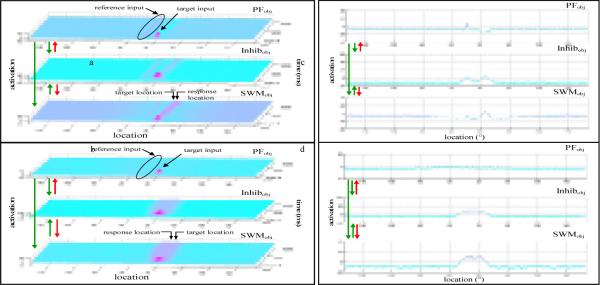Figure 3.
Adult (a) and child (b) simulations of the Dynamic Field Theory. Panels represent: perceptual field [PFobj]; inhibitory field [Inhibobj]; excitatory working memory field [SWMobj]. Arrows represent interaction between fields. Green arrows represent excitatory connections and red arrows represent inhibitory connections. In each field, location is represented along the x-axis (with midline at location 0), activation along the z-axis, and time along the y-axis. The trial begins at the back of the figure and moves forward. Time slices from the end of the delay for the adult model (c) and the child model (d)

